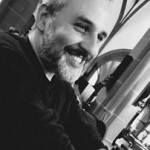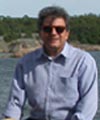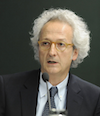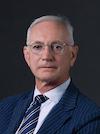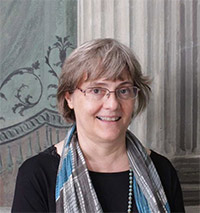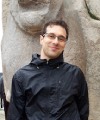Studying at the University of Verona
Here you can find information on the organisational aspects of the Programme, lecture timetables, learning activities and useful contact details for your time at the University, from enrolment to graduation.
Academic calendar
The academic calendar shows the deadlines and scheduled events that are relevant to students, teaching and technical-administrative staff of the University. Public holidays and University closures are also indicated. The academic year normally begins on 1 October each year and ends on 30 September of the following year.
Course calendar
The Academic Calendar sets out the degree programme lecture and exam timetables, as well as the relevant university closure dates..
| Period | From | To |
|---|---|---|
| CuCi IA | Sep 21, 2020 | Oct 31, 2020 |
| CuCi IB | Nov 9, 2020 | Jan 9, 2021 |
| CuCi IIA | Feb 15, 2021 | Apr 1, 2021 |
| CuCi IIB | Apr 14, 2021 | May 29, 2021 |
| Session | From | To |
|---|---|---|
| sessione d'esame invernale CuCi | Jan 11, 2021 | Feb 13, 2021 |
| sessione d'esame estiva CuCi | Jun 7, 2021 | Jul 24, 2021 |
| sessione d'esame autunnale CuCi | Aug 23, 2021 | Sep 18, 2021 |
| Session | From | To |
|---|---|---|
| sessione di laurea invernale 19-20 | Apr 7, 2021 | Apr 13, 2021 |
| sessione di laurea estiva 20-21 | Jul 5, 2021 | Jul 10, 2021 |
| Sessione autunnale di laurea a.a. 2020/21 | Nov 8, 2021 | Nov 13, 2021 |
| Sessione straordinaria di laurea a.a. 2020/21 | Mar 28, 2022 | Apr 2, 2022 |
| Period | From | To |
|---|---|---|
| Festa di Ognissanti | Nov 1, 2020 | Nov 1, 2020 |
| Chiusura Ateneo ponte Immacolata | Dec 7, 2020 | Dec 7, 2020 |
| Festa dell'Immacolata | Dec 8, 2020 | Dec 8, 2020 |
| Vacanze di Natale | Dec 24, 2020 | Jan 6, 2021 |
| Vacanze di Pasqua | Apr 2, 2021 | Apr 6, 2021 |
| Festa della liberazione | Apr 25, 2021 | Apr 25, 2021 |
| Festa del lavoro | May 1, 2021 | May 1, 2021 |
| Festa del Santo Patrono | May 21, 2021 | May 21, 2021 |
| Sospensione delle lezioni | May 22, 2021 | May 22, 2021 |
| Festa della Repubblica | Jun 2, 2021 | Jun 2, 2021 |
| Vacanze estive | Aug 9, 2021 | Aug 15, 2021 |
Exam calendar
Exam dates and rounds are managed by the relevant Culture and Civilisation Teaching and Student Services Unit.
To view all the exam sessions available, please use the Exam dashboard on ESSE3.
If you forgot your login details or have problems logging in, please contact the relevant IT HelpDesk, or check the login details recovery web page.
Should you have any doubts or questions, please check the Enrollment FAQs
Academic staff

Bassetti Massimiliano
 massimiliano.bassetti@univr.it
massimiliano.bassetti@univr.it
 045802 8376
045802 8376
 riccardo.bertolazzi@univr.it
riccardo.bertolazzi@univr.it
 stefania.cretella@univr.it
stefania.cretella@univr.it
 dario.donetti@univr.it
dario.donetti@univr.it
 vincenzo.giannotti@univr.it
vincenzo.giannotti@univr.it
 piergiovanna.grossi@univr.it
piergiovanna.grossi@univr.it
 elisa.lerco@univr.it
elisa.lerco@univr.it
 francesco.lupi@univr.it
francesco.lupi@univr.it

Mastrocinque Attilio
 attilio.mastrocinque@univr.it
attilio.mastrocinque@univr.it
 +39 045802 8386
+39 045802 8386
 marco.menato@univr.it
marco.menato@univr.it
 alberto.scandola@univr.it
alberto.scandola@univr.it
 cecilia.sideri@univr.it
cecilia.sideri@univr.it
 carlo.vannini@accademiabelleartiverona.it
carlo.vannini@accademiabelleartiverona.it
Study Plan
The Study Plan includes all modules, teaching and learning activities that each student will need to undertake during their time at the University.
Please select your Study Plan based on your enrollment year.
1° Year
| Modules | Credits | TAF | SSD |
|---|
1 module to be chosen among the following2° Year activated in the A.Y. 2021/2022
| Modules | Credits | TAF | SSD |
|---|
1 module to be chosen among the following2 modules to be chosen among the following3 modules to be chosen among the following3° Year activated in the A.Y. 2022/2023
| Modules | Credits | TAF | SSD |
|---|
1 module to be chosen among the following1 module to be chosen among the following3 modules to be chosen among the following| Modules | Credits | TAF | SSD |
|---|
1 module to be chosen among the following| Modules | Credits | TAF | SSD |
|---|
1 module to be chosen among the following2 modules to be chosen among the following3 modules to be chosen among the following| Modules | Credits | TAF | SSD |
|---|
1 module to be chosen among the following1 module to be chosen among the following3 modules to be chosen among the following| Modules | Credits | TAF | SSD |
|---|
Legend | Type of training activity (TTA)
TAF (Type of Educational Activity) All courses and activities are classified into different types of educational activities, indicated by a letter.
Type D and Type F activities
| years | Modules | TAF | Teacher |
|---|---|---|---|
| 1° 2° 3° | Castelvecchio Lectures (City Art Museums) | F |
Alessandra Zamperini
(Coordinator)
|
| 1° 2° 3° | C.T.G. Lectures | F |
Alessandra Zamperini
(Coordinator)
|
| 1° 2° 3° | Giornata mondiale della poesia | F |
Arnaldo Soldani
(Coordinator)
|
| 1° 2° 3° | Giovedì' culturali dell'ISSR I ciclo | F |
Tiziana Franco
(Coordinator)
|
| 1° 2° 3° | The Unesco World Heritage Sites | F |
Silvana Bianchi
(Coordinator)
|
| 1° 2° 3° | Il testo en abyme: rappresentazioni della scrittura nell’Europa romantica - Convegno internazionale del CRIER - 5-6 novembre 2020 | F |
Corrado Viola
(Coordinator)
|
| 1° 2° 3° | Orientaday | F |
Tiziana Franco
(Coordinator)
|
| years | Modules | TAF | Teacher |
|---|---|---|---|
| 1° 2° 3° | Castelvecchio Lectures (City Art Museums) | F |
Alessandra Zamperini
(Coordinator)
|
| 1° 2° 3° | Convegno su carlo gozzi nel terzo centenario della nascita | F |
Nicola Pasqualicchio
(Coordinator)
|
| 1° 2° 3° | C.T.G. Lectures | F |
Alessandra Zamperini
(Coordinator)
|
| 1° 2° 3° | Giovedì' culturali dell'ISSR I ciclo | F |
Tiziana Franco
(Coordinator)
|
| 1° 2° 3° | How to write your dissertation | F |
Alessandro Arcangeli
(Coordinator)
|
| years | Modules | TAF | Teacher | |
|---|---|---|---|---|
| 1° | Introduction to the study of decorative arts | F |
Valerio Terraroli
(Coordinator)
|
|
| 1° 2° 3° | Attivita' FAI | F | Not yet assigned | |
| 1° 2° 3° | Practical exercises for the recognition of works of art | - |
Enrico Dal Pozzolo
(Coordinator)
|
|
History of Modern Art (i+p) (2021/2022)
Teaching code
4S02161
Credits
12
Coordinator
Language
Italian
Also offered in courses:
- History of Modern Art (i+p) - I MODULO PARTE (I) of the course Bachelor’s degree in Humanities
- History of Modern Art (i+p) - II MODULO PARTE (P) of the course Bachelor’s degree in Humanities
The teaching is organized as follows:
Learning outcomes
The course aims to provide a general understanding of the main phenomena in the field of modern art, both from a theoretical and methodological point of view and from that of a concrete approach to reading the work of art. The focus of the course is to highlight the complexity of the educational stages of an artist's journey through the analysis of his production, choosing among the most important figures in European painting of the modern age.
Program
FIRST PART
Course Content: the course provides an overview of the major artistic movements in Italy, between the beginning of the Fifteenth century (Tardogotico and Renaissance) and the the beginning of the Nineteenth century(Neoclassicism and Romanticism). In this course, it is impossible to analyse all aspects of this period, but some readings specimens will be proposed, especially connected with the taste and with the collecting and cultural contexts, also in a perspective of a methodological interrelationship.
TOPICS:
a. Cultural phenomena in Italy and in Europe from the early Renaissance to Neoclassicism;
b. The protagonists of these cultural phenomena;
c. The main works of these artists.
Books: S. Settis, T. Montanari, Arte. Una storia Naturale e civile, Einaudi: vol. 3 (from the first to the last chapter), vol. 4, up to page 349; G. Sciolla, Studiare l’arte: metodo, analisi e interpretazione delle opere e degli artisti, Utet. It is expressly required the visual knowledge of all the images in the text of Settis and Montanaris, which will be subject to examination. For those who have never studied art history, we recommend to read the book by H. Gombrich, The story of Art, Phaidon.
Teaching methods: powerpoint, videos and (possibly) conferences. To improve the personal ability to read the works of art (particulary paintings), the (non-compulsory) attendance of the "Orientation Seminar for the reading of the pictorialworks" (online information) is recommended.
SECOND PART
Course Content: Tiziano: Titian's women
Specifically, the following aspects will be addressed:
1. General introduction to the Venetian pictorial panorama in which Titian worked
2. Framing of Titian's biography and artistic production
3. Analysis of the women represented by Titian.
Bibliography: 1. For the Venetian artistic-cultural backdrop that is the background to Titian's production, see the chapter dedicated to Il Cinquecento, in Enrico Maria Dal Pozzolo, Pittura veneta, Milano 2010, pp. 154-221 (the pdf will be made available to students by the teacher in one of the notices). 2. For the biography and main works of Titian, study the entry of Charles Hope in the Dizionario Biografico degli Italiani (also online: https://www.treccani.it/encyclopedia/tiziano-vecellio_%28Dtionary-Biografico%29/ ). 3. For the analysis of the women represented by Titian, study the catalog of the exhibition Titian's women (Vienna, Kunsthistorisches Museum, October 2021 - Milan, Palazzo Reale, from January 2022), edited by S. Ferino-Pagden - forthcoming publication.
Teaching methods: powerpoint and videos.
Examination Methods
FIRST PART
There are two methods of examination.
The first is more traditional and includes a written test in the classroom. It is divided into three parts. The first part (a) consists of a test of recognition of twenty images taken from the manual (Settis-Montanari), each projected for a time of one minute: it will be necessary to indicate the title of the work, the date (or the period, if the date is not certain) of execution and - if possible - the location of the work. The second part (b) consists of a broader question on a specific topic: the time allowed for the paper is 40 minutes. A shorter question will follow (c), for which you will have 20 minutes. The total duration of the test in this mode is therefore 80 minutes. The correction will take place within the first few days after the test. It should be noted that in tests b and c not only the contents will be evaluated, but also the form and the respect of the spelling and grammar rules. To obtain a positive mark (18 or higher) it is necessary that at least ten of the twenty projected images are recognized and that the answers to questions b and c are considered sufficient.
Second method.
In case of need and / or teaching opportunity, there is also the possibility of carrying out the exam also electronically, using the multiple-answer question system. This possibility will be communicated by the teacher to the students in advance. This will take place in one of the University's computer rooms, if possible, otherwise remotely, with a zoom or similar connection. In this second mode the questions will be divided into two blocks:
I - Recognition of 20 images reproduced in the manual (Settis-Montanari), considering various aspects of the same (author of the work, subject, period, location, etc.) indicated in the manuals. For example: SLIDE 1 - QUESTION: Author of the work: 1: X; 2: Y; 3: Z; 4: none of these. The expected time is about 7 minutes, for each image it is 20 seconds.
II - After, there are 40 questions in the form of quizzes, each with four possible answers, of which only one correct (as above). They are taken from the manual of Settis and Montanari and from the book of Sciolla. Here, too, the expected time for each question is 20 seconds, with a total of 21 minutes for all the test. At the end of the two tests, the solutions to the various questions will be shown. To get a positive grade (18 or higher), you must correctly answer at least 35 of the 60 questions. The correction will be immediate, as processed by the system.
SECOND PART
There are two methods for conducting the exam.
The first is more traditional and includes a written test in the classroom. It is divided into three parts. The first part (a) consists of a proof of recognition of twenty images taken from the catalog of the exhibition in Vienna and Milan and from the chapter Il Cinquecento in the volume Pittura Veneta. Each image will be projected for one minute and the questions may relate to the title of the work, the date (or the period, if the date is uncertain) of execution and - if possible - the location. The second part (b) consists of a broader question on a specific topic: the time allowed is 40 minutes. A shorter question will follow (c), for which you will have 20 minutes. The overall duration of the exam in this mode is therefore 80 minutes. The correction will take place within the first days following the exam. It should be noted that in tests b and c not only the contents will be evaluated, but also the form and the respect of the spelling and grammar rules. To obtain a positive mark (18 or higher) it is necessary that at least ten of the twenty projected images are recognized and that the answers to questions b and c are considered sufficient.
Second mode.
In case of need and/or teaching opportunity, there is also the possibility of carrying out the exam electronically, using the multiple-answer question system. This possibility will be communicated by the teacher to the students in advance. The test will be carried out in one of the University's computer rooms, if possible, otherwise remotely, with Zoom or similar connections. In this second modality the questions will be divided into two blocks: I - Identification of 20 images taken from the catalog of the exhibition in Vienna and Milan and from the chapter Il Cinquecento in the volume Pittura Veneta, considering various aspects of the same (author of the work, subject, period, location, etc.). For example: SLIDE 1 - QUESTION: Author of the work: 1: X; 2: Y; 3: Z; 4: none of these. The expected time for each image is 20 seconds, for a total of 7 minutes. II - After, there are 40 questions in the form of quiz, each with four possible answers, of which only one correct (as above). They are taken from the Hope’s entry, from the catalog of the exhibition in Vienna and Milan and from the chapter Il Cinquecento in the volume Pittura Veneta. Here too the time allowed for each question is 20 seconds, with a total for the overall test (I + II) of 21 minutes. At the end of the two tests, the solutions to the various questions will be shown. To get a positive grade (18 or higher), you must correctly answer at least 35 of the 60 questions. The correction will be immediate, as processed by the system.
Career prospects
Module/Programme news
News for students
There you will find information, resources and services useful during your time at the University (Student’s exam record, your study plan on ESSE3, Distance Learning courses, university email account, office forms, administrative procedures, etc.). You can log into MyUnivr with your GIA login details: only in this way will you be able to receive notification of all the notices from your teachers and your secretariat via email and soon also via the Univr app.
Graduation
List of theses and work experience proposals
| theses proposals | Research area |
|---|---|
| Ambiti di tesi | Art & Architecture - Art & Architecture |
| Stage | Research area |
|---|---|
| Lavorare in archivio | Various topics |


